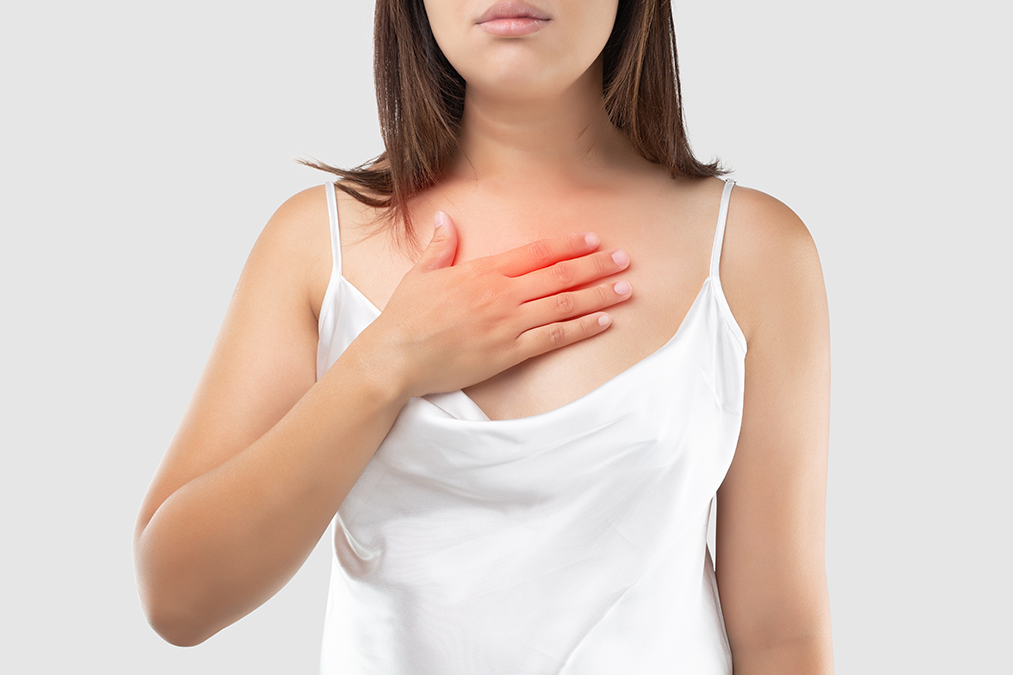 Acid reflux can be horrible.
Acid reflux can be horrible.
So, it’s no wonder that people try a lot of things to avoid it.
Eat this, don’t eat that; take this mixture.
The approaches are numerous, but they rarely help.
So you’ll celebrate a new study published in the journal Neurogastroenterology & Motility because it reveals that sometimes less is more and demonstrates the easiest way to avoid acid reflux.
The research team from Sandwell & West Birmingham Hospitals recruited 27 subjects with gastroesophageal reflux: 16 had a mild to moderate form (group A), and 11 had a severe form (group B).
These researchers carried out high-resolution impedance manometry and PH monitoring before and after their subjects ate a meal, while they were resting, while they were walking, and while they were exercising.
PH monitoring refers to the measurement of acid in the esophagus, and high-resolution impedance manometry examines food as it proceeds down the esophagus and stomach to see whether there is an obstacle or other problem.
They found more acid reflux episodes after a meal in group B than in group A: a median of 10 versus 6.5 episodes. The maximum number of episodes was 18 in both groups.
Food also took much longer to clear the esophagus in the subjects in group B than in the group A subjects—four and a half times longer, in fact.
Lower esophageal sphincter relaxation was the mechanism that caused the most acid reflux episodes in both groups.
The esophageal sphincter is the valve at the top of your stomach or the bottom of your esophagus that is meant to close and keep the food inside your stomach. If this valve is weak or relaxes frequently, then acid reflux becomes likely because the food flows back into your esophagus.
This occurred a median of 17 times after a meal in group B, compared with 13.5 times in group A. Some people experienced 34 of these episodes after a meal.
Now here is where this gets interesting.
When group A exercised directly after a meal, their esophageal sphincters relaxed 4.7 times per hour, compared with 2.4 times per hour when they rested after eating.
In group B, this happened 5.3 times per hour during post-meal exercise and four times per hour during post-meal rest.
These findings suggest that there are two things you should never do after a meal.
1. Avoid lying down. If you sit up, gravity will limit or prevent your food from flowing back into your esophagus when the sphincter relaxes.
2. Avoid exercise. If you are vulnerable to acid reflux, the best approach is probably to exercise first thing in the morning at least eight to 10 hours after your last meal.

 Overcoming IBD
Overcoming IBD Multiple Sclerosis
Multiple Sclerosis Banishing Bronchitis
Banishing Bronchitis Gum Disease Gone
Gum Disease Gone Overcoming Onychomycosis
Overcoming Onychomycosis Neuropathy No More
Neuropathy No More The Prostate Protocol
The Prostate Protocol Brain Booster
Brain Booster
 Ironbound
Ironbound
 Solution for Shingles
Solution for Shingles
 The Bone Density Solution
The Bone Density Solution
 The Ultimate Healing Protocol
The Ultimate Healing Protocol
 The Parkinson's Protocol
The Parkinson's Protocol
 The Chronic Kidney Disease Solution
The Chronic Kidney Disease Solution
 Overthrowing Anxiety
Overthrowing Anxiety The Fatty Liver Solution
The Fatty Liver Solution The Hypothyroidism Solution
The Hypothyroidism Solution
 The End of Gout
The End of Gout The Blood Pressure Program
The Blood Pressure Program
 The Oxigized Cholesterol Strategy
The Oxigized Cholesterol Strategy
 Stop Snoring And Sleep Apnea Program
Stop Snoring And Sleep Apnea Program
 The Arthritis Strategy
The Arthritis Strategy The Vertigo & Dizziness Program
The Vertigo & Dizziness Program The 3-Step Diabetes Strategy
The 3-Step Diabetes Strategy Hemorrhoids Healing Protocol
Hemorrhoids Healing Protocol The Erectile Dysfunction Master
The Erectile Dysfunction Master Weight Loss Breeze
Weight Loss Breeze The IBS Program
The IBS Program The Insomnia Program
The Insomnia Program The Migraine and Headache Program
The Migraine and Headache Program The Neck Pain Solution
The Neck Pain Solution The Menopause Solution
The Menopause Solution The Ejaculation Master
The Ejaculation Master The TMJ Solution
The TMJ Solution The Acid Reflux Solution
The Acid Reflux Solution The Fibromyalgia Solution
The Fibromyalgia Solution The Psoriasis Strategy
The Psoriasis Strategy